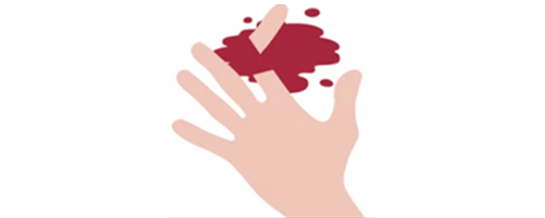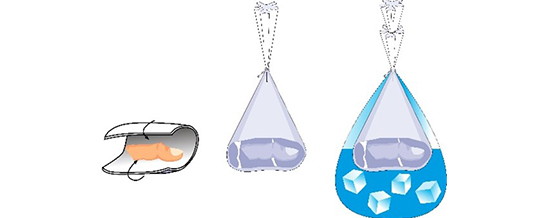How to Care for Your Child with Fingertip injury and Amputation
This leaflet will provide you with information about fingertip injury and amputation causes, symptoms, diagnosis, treatment and home care advice.

What is fingertip injury and Amputation?
Fingertip injuries are common in children and are frequently seen in the Emergency Department.
- Complete Amputation: this is when part of the finger is cut and is totally separate from the hand.
- Partial Amputation: This is when part of the finger is still attached to the hand.
This may or may not be associated with a break in the underlying bone or injury to the tendons within the finger.
What are the causes of fingertip injury and Amputation?
This is typically caused by the following:
- If the finger gets trapped when shutting the door.
- Accidents at home, school or during the play.
- Cut by a sharp object
- Crush injury by a heavy object.
What are the symptoms of fingertip injury and Amputation?
- An amputation of a finger can cause damage to your child’s:
- skin
- soft tissue
- nail bed
- tendons (tissues that attaches your muscle to bone)
- underlying bone
- Bleeding from the site of injury. The bleeding can be stopped by applying strong pressure.
- Severe pain and your child would benefit from some pain relief if he/she is able to take it.
How are fingertip injury and Amputation diagnosed?
You will need to take your child to the nearest Emergency Department. Based on the healthcare professional observation and findings, he/she may decide to perform an X-ray to check if there is a break in the bone. Although wound evaluation will discover the severity and extent of the injury and guides further treatment plan.
How are fingertip injury and Amputation treated?
Treatment depends on many factors:
- The extent of the Amputation;
- The involvement of the underlying structures such as bone, tendons etc.
Your child doctor may give a numbing injection into the finger to reduce the pain. Some children may need to be put to mild sleep (sedation). Your child doctor will talk to you in detail to explain the sedation if this is necessary.
A thorough washout of the wound will be done to clean the wound and facilitate having a good look into the wound. Further steps on repairing the wound shall be explained to you depending on how the injury is. The risks and the likely outcome will be discussed before proceeding.
Some cases of complete amputation of the finger may require close follow-up by a plastic surgeon in the outpatient clinic. You will be advised and will be contacted with a follow-up appointment
Depending on the wound and the tetanus vaccination status of your child, the doctor will decide on whether tetanus vaccination or antibiotics needs to be given.
Home care advice
- Do not put any creams, herbs, coffee grounds or toothpaste on the wound. This will make the wound dirty and may cause infection
- Clean the injury with clean water and wrap the site with a slightly compressive dressing to minimize bleeding.
- Once the bleeding has stopped, elevate the arm above the level of the chest to minimize swelling.
- Splinting the involved part provides support and helps immobilize the bone if there is a break in it.
If your child fingertip is completely cut off, do the following:
- Gently clean the detached part with water
- Cover it in a wet gauze sealed in an appropriately sized water-tight bag
- Place this bag in an iced container
- Ensure that the part does not directly contact with the ice

Go to the Emergency Department or call 999 if:
- The bleeding is severe and does not stop
- Your child looks pale and faints.

